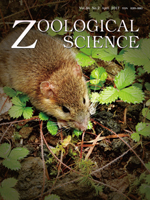The eclosion gate in insect development is controlled by the circadian clock and hormonal cascade. To study mechanisms underlying the eclosion gate, we examined eclosion-timing signals from the circadian clock, and the role of 20-hydroxyecdysone in the eclosion gate of the flesh fly, Sarcophaga crassipalpis. Phase responses of the eclosion rhythm were examined by applying a low-temperature pulse in the day prior to the first eclosion peak. A low-temperature pulse applied about 5.4 h before eclosion advanced an eclosion peak by 0.9 h. This indicates that an interval from the Zeitgeber (external environmental cues) input to the behavioral output by the circadian clock is 4.5 h. Signals released by the circadian clock in the last 4.5 h before eclosion could change eclosion time. In the prothoracic gland, daily changes in immunoreactivity against a circadian clock protein PERIOD were observed in the last two days before eclosion. Hemolymph titers of 20-hydroxyecdysone were very low in the last two days of the pupal period. 20-hydroxyecdysone injections caused a delay, not an advancement, in eclosion time in a time dependent manner: pharate adults were sensitive to 20-hydroxyecdysone about 20 and 16 h before eclosion, whereas no significant effects were observed about 12 and 8 h before eclosion. These results suggest that 20-hydroxyecdysone is not a timing signal submitted by the circadian clock but an indicator to suppress premature eclosion. The circadian clock in the prothoracic gland presumably sends a signal distinct from ecdysteroids from several hours before eclosion to time the onset of eclosion.
How to translate text using browser tools
1 April 2017
Clock and Hormonal Controls of an Eclosion Gate in the Flesh Fly Sarcophaga crassipalpis
Miki Yamamoto,
Koji Nishimura,
Sakiko Shiga

Zoological Science
Vol. 34 • No. 2
April 2017
Vol. 34 • No. 2
April 2017
20-hydroxyecdysone
circadian clock
PERIOD immunocytochemistry
population rhythms
prothoracic gland
Sarcophaga crassipalpis




